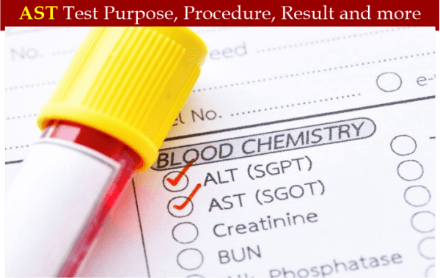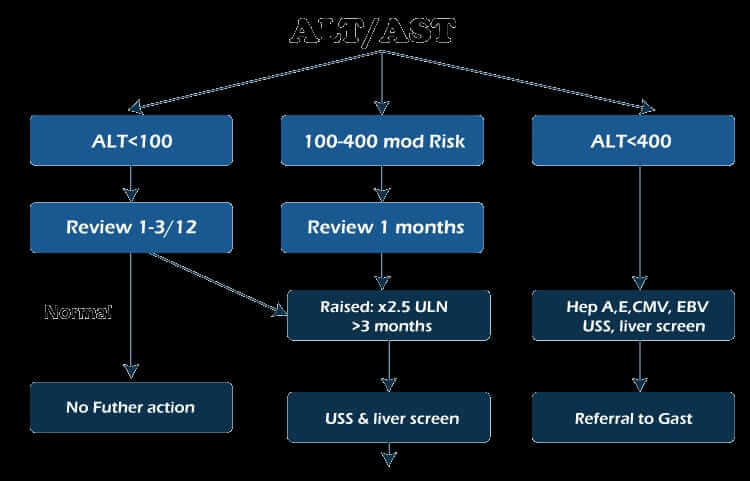What is the Full Form of ASTAST: Aspartate TransaminaseAST stands for Aspartate transaminase or aspartate aminotransferase, whereas it is also called Asp AT/ASAT/AAT or (serum) glutamic oxaloacetic transaminase (GOT, SGOT). It is a transaminase enzyme, a catalyst to help in bodily processes for the healthy functioning of organs and the body ultimately. It is found in inner organs like the liver, kidney, brain, heart, pancreas, muscles, gall bladder, red blood cells, and some other tissues present in our body. It is a pyridoxal phosphate-dependent transaminase enzyme discovered in 1954 by Arthur Karmen and his colleague. 
Many enzymes, the type of protein in a cell, are present all over the human body and help perform important functions. Aspartate transaminase is mainly associated with the health of the liver. The liver is an organ of vital importance which performs various important functions as producing chemicals helpful in the process of digestion and providing support to every other organ of the body due to its location and multidimensional biological functions such as detoxification, protein synthesis, etc. The AST is important for keeping the liver healthy and to do so AST test is done. These are simple blood tests that measure the serum AST, ALT level, and their ratios as biomarkers of a healthy liver. Functions:The major function of Aspartate transaminase is to act as an agent for the reactions for functions of the liver. It helps in the interconversion of ASPARTATE and α-KETOGLUTARATE to OXALOACETATE and GLUTAMATE. It helps in the transfer of an amino group to a ketoacid which is from aspartate or glutamate, where vitamin B6 act as a cofactor. The cofactor helps by shuttling between (Vitamin B6) PLP and PMP (pyridoxamine phosphate) form. This amino acid degradation and biosynthesis are performed by the catalyzed amino acid by AST, the enzyme. The byproducts of these processes are urea and ammonium, which help complete the citric acid cycle. Difference between AST (aspartate transferase) and ALT (alanine transferase):Both are identified as liver enzymes, but aspartate transferase is found in other body parts too. ALT is always evaluated and measured with AST in a liver function panel or CMP (comprehensive metabolic panel). While testing the level of ALT is considered for actual determination of the health of the liver than AST as it is present in the liver only, and a change in level can give proper details about the health of the liver. However, any medical examinee will examine the level of both AST and ALT. This test is done to find the damaged cells of the liver, as when a cell is damaged, the AST and ALT leak into the blood while the blood test is conducted, the quantity is identified, and later, the reports are prepared accordingly. 
Mechanism:The AST works on dual substrate recognition, which is the ability to locate different amino acids and bind them selectively with different side chains. Usually, the amino acids are asp and glucose, which are then processed and bound together. If the transaminase has the same half-reactions, then their process of binding is referred to as the ping-pong mechanism. There are many half-reactions involved and they are identified differently; in the first half-reaction, amino acid reacts with PLP. In the second half-reaction, ketoacid reacts with PMP to produce amino acids. Clinical Significance:AST (Aspartate transaminase or aspartate aminotransferase) is like ALT (alanine transaminase) as they are both Liver enzymes present in the parenchymal cells of the organ. ALT is mainly found in the Liver and is negligible amount is present in other organs of the body, which makes it more specific in nature for the test to identify the inflammation in the liver. The reference or standard for testing the patient depends on the gender, which is 8-40 IU/L for males and 6-34 IU/L for females. AST is generally unstable, and the level can easily be increased temporarily by cases of deep burn or seizure. Also, if a person goes under heart procedures, surgery, or even after intense exercise. A high level of AST does not necessarily mean any problem with the liver but also increases if the iron content in the body increases, cardiac arrest and muscle damage. Pancreatitis can also lead to an increase in the level of AST. Even pregnancy can lead to an increase in the Aspartate transaminase or aspartate aminotransferase level. 
Next TopicFull Form
|
 For Videos Join Our Youtube Channel: Join Now
For Videos Join Our Youtube Channel: Join Now
Feedback
- Send your Feedback to [email protected]
Help Others, Please Share










